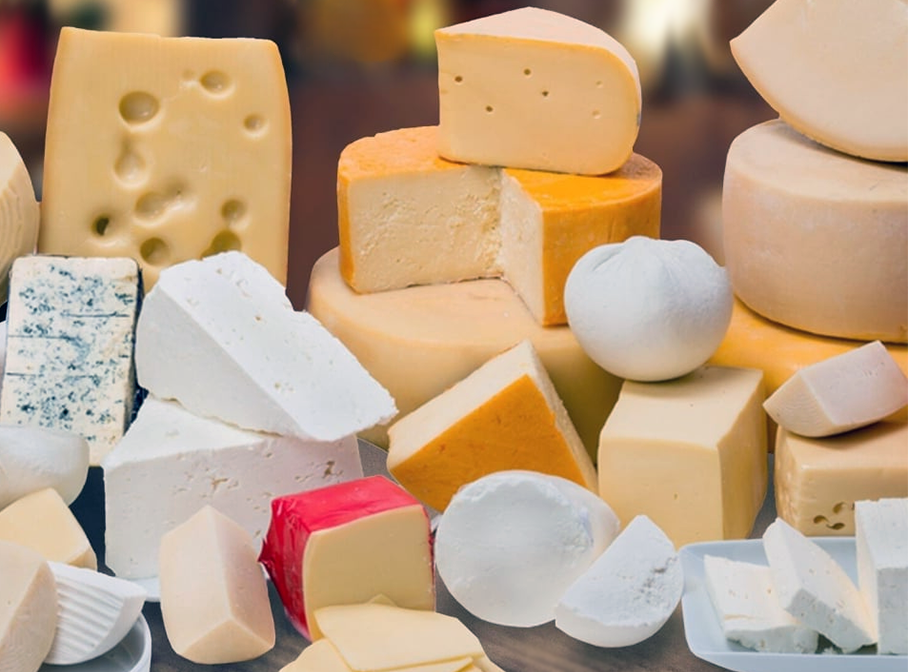FabulousFusionFood's Cheese-based Recipes 3rd Page
 Mixed hard, soft and blue cheeses.
Mixed hard, soft and blue cheeses.
Welcome to FabulousFusionFood's Cheese-based Recipes Page — This is a continuation of an entire series of pages that will, I hope, allow my visitors to better navigate this site. As well as displaying recipes by name, country and region of origin I am now planning a whole series of pages where recipes can be located by meal type and main ingredient. This page gives a listing of all the cheese and cheese-based recipes added to this site.
Cheese is a type of dairy product formed by the coagulation of the milk protein casein. Prior to refrigeration, the production of cheese and yoghurts were some of the few ways that milk could be preserved for long-terms storage. It comprises proteins and fat from milk (usually the milk of cows, buffalo, goats or sheep). During production, milk is usually acidified and either the enzymes of rennet or bacterial enzymes with similar activity are added to cause the casein to coagulate. The solid curds are then separated from the liquid whey and pressed into finished cheese. Some cheeses have aromatic moulds on the rind, the outer layer, or throughout.
Most cheeses are acidified by bacteria, which turn milk sugars into lactic acid; the addition of rennet completes the curdling. Vegetarian varieties of rennet are available; most are produced through fermentation by the fungus Mucor miehei, but others have been extracted from Cynara thistles. For a few cheeses, the milk is curdled by adding acids such as vinegar or lemon juice.
The word cheese comes from Latin caseus, from which the modern word casein is derived. The earliest source is from the proto-Indo-European root *kwat-, which means "to ferment, become sour". That gave rise to cīese or cēse (in Old English) and chese (in Middle English). Similar words are shared by other West Germanic languages—West Frisian tsiis, Dutch kaas, German Käse, Old High German chāsi—all from the reconstructed West-Germanic form *kāsī, which in turn is an early borrowing from Latin.
When the Romans began to make hard cheeses for their legionaries' supplies, a new word started to be used: formaticum, from caseus formatus, or "cheese shaped in a mold". It is from this word that the French fromage, standard Italian formaggio, Catalan formatge, Breton fourmaj, and Occitan fromatge (or formatge) are derived. Of the Romance languages, Spanish, Portuguese, Romanian, Tuscan and some Southern Italian dialects use words derived from caseus (queso, queijo, caș, cacio and caso for example).
Cheese is an ancient food whose origins predate recorded history. There is no conclusive evidence indicating where cheesemaking originated, whether in Europe, Central Asia or the Middle East. The earliest proposed dates for the origin of cheesemaking range from around 8000 BCE, when sheep were first domesticated. Because animal skins and inflated internal organs have provided storage vessels for a range of foodstuffs since ancient times, it is probable that the process of cheese making was discovered accidentally by storing milk in a container made from the stomach of an animal, resulting in the milk being turned to curd and whey by the rennet from the stomach. There is a legend—with variations—about the discovery of cheese by an Arab trader who used this method of storing milk.
The recipes given here are sourced from around the world, and give a broad view of cheese-based dishes globally as well as presenting historical recipes from the ancient Greek and Roman worlds.
The alphabetical list of all the cheese-based recipes on this site follows, (limited to 100 recipes per page). There are 889 recipes in total:
Page 3 of 9
Page 3 of 9